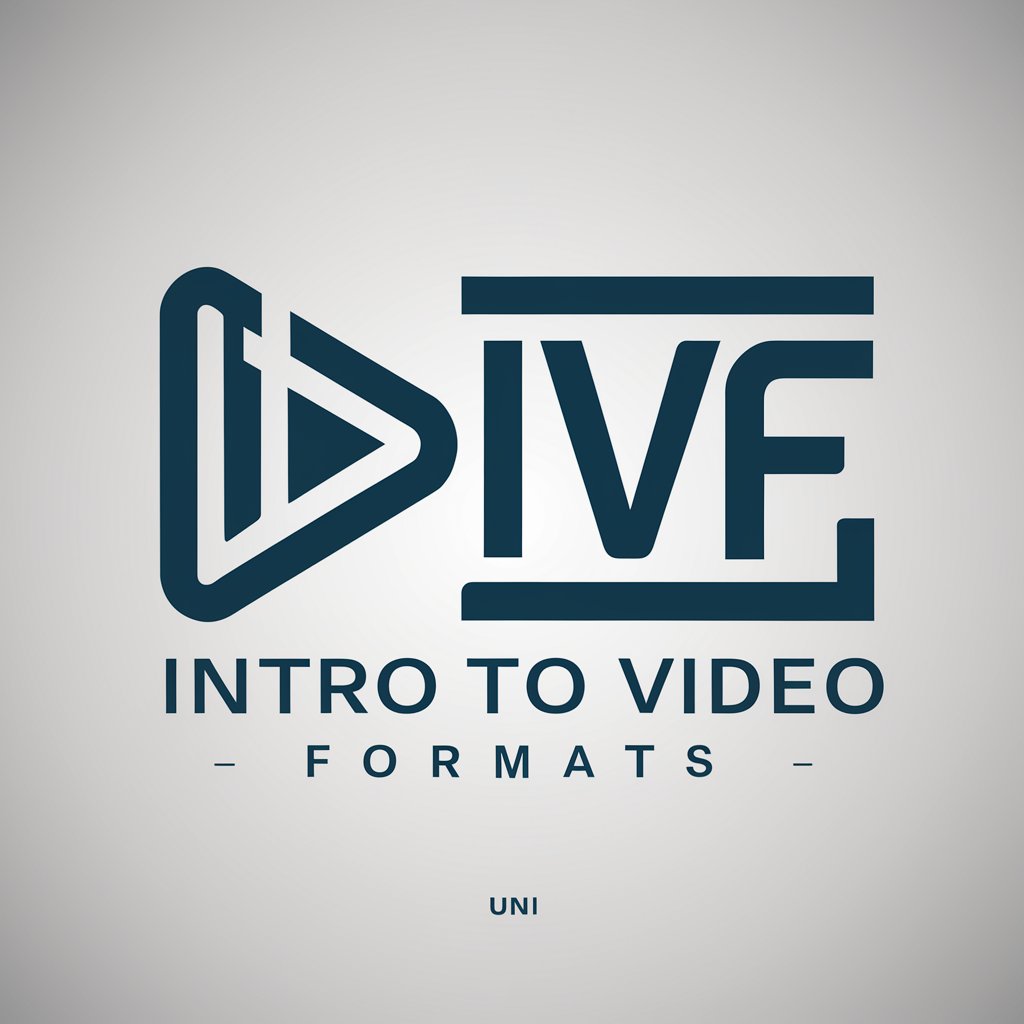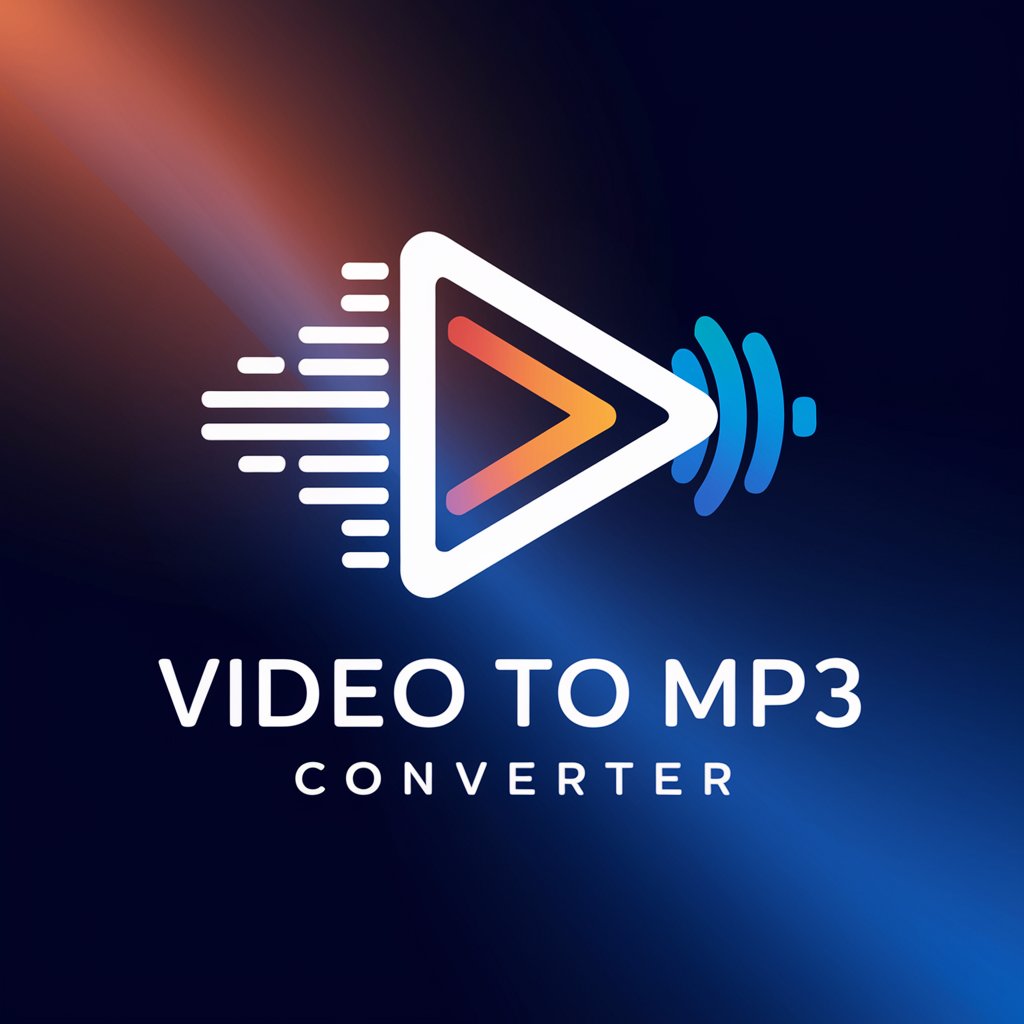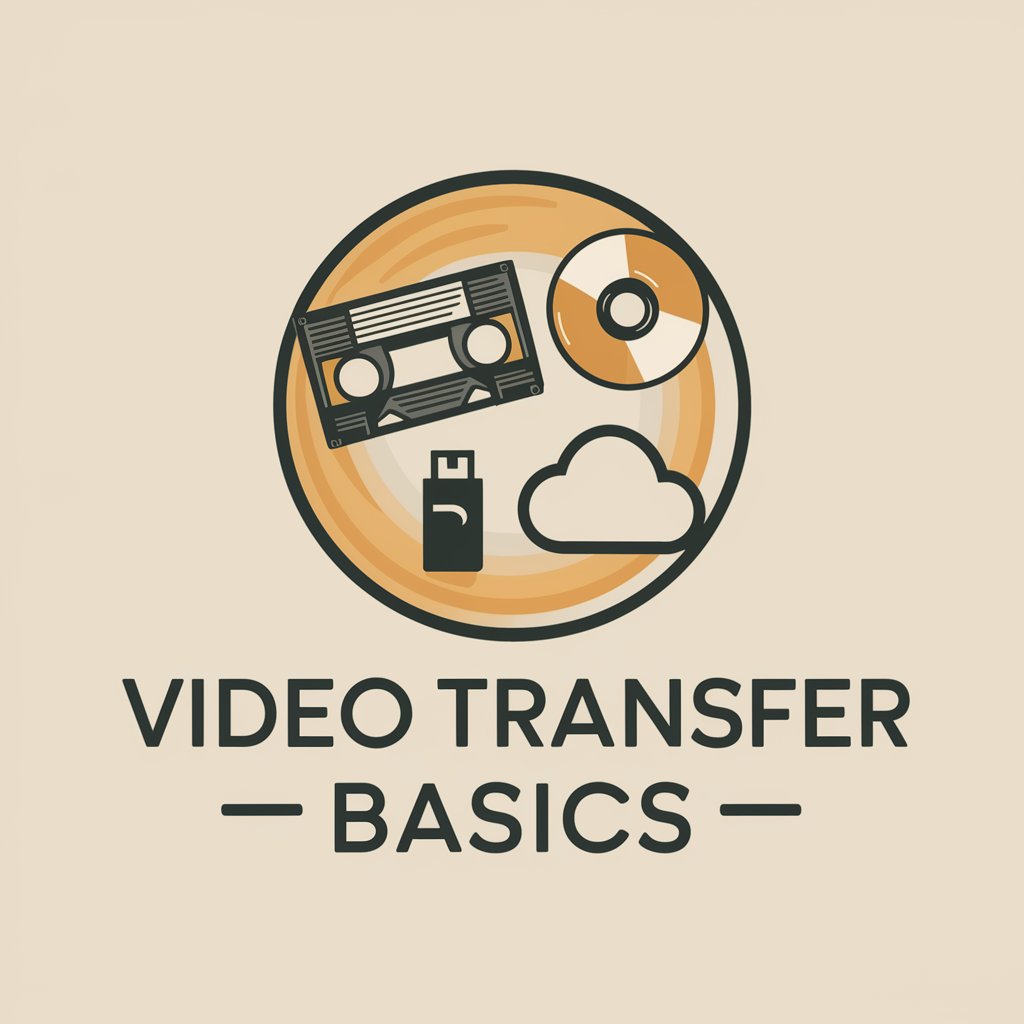
Intro to Video Formats - Guide to Video Formats

Welcome to Intro to Video Formats, created by [UNI](https://useuni.app)!
Master Video Formats with AI
Explain the difference between MP4 and MKV formats.
What are the best video formats for web streaming?
How does video compression affect quality and file size?
Which video format is ideal for professional editing?
Get Embed Code
Overview of Intro to Video Formats
Intro to Video Formats is an educational resource designed to help users understand the various video formats available today. This resource explores the technical specifications, applications, and benefits of different video formats like MP4, AVI, and MKV. It emphasizes the practical applications of each format in various settings, such as streaming, professional editing, or mobile optimization. By explaining the nuances of compression techniques, file sizes, and compatibility issues, Intro to Video Formats aims to empower users to make informed decisions when choosing a video format for specific tasks. Powered by ChatGPT-4o。

Key Functions and Applications
Educational Content on Video Formats
Example
Explains the structural differences and use cases between formats like MP4 (common in streaming services for its efficient compression) and AVI (used in professional editing for minimal compression).
Scenario
A user deciding which format to use for uploading videos to a personal blog might learn why MP4 is a better choice due to its wide compatibility and balance between quality and file size.
Guidance on Compression Techniques
Example
Details how codecs like H.264 and H.265 impact video quality and streaming efficiency.
Scenario
A streaming service provider examines which codec can best deliver high-quality video at lower bandwidths, potentially opting for H.265 for its improved compression capabilities.
Recommendations Based on User Needs
Example
Provides tailored advice on selecting video formats for different devices and network conditions.
Scenario
A filmmaker looking to distribute their film digitally receives advice on using MKV for its support of high-quality audio and video tracks, along with subtitles and metadata.
Target Audience
Content Creators
Includes YouTubers, filmmakers, and digital marketers who need to choose optimal video formats for editing, archiving, or broadcasting. They benefit from understanding file types that best preserve quality or are easiest to edit and share.
IT Professionals and Technicians
These users manage and distribute digital media files across various platforms and devices. They gain from insights into the most efficient formats for storage, compatibility, and transmission.
Educators and Students
Individuals in educational settings use video formats for creating and sharing educational content. Understanding different formats helps them optimize their media for the intended audience, whether online or in classroom settings.

How to Use Intro to Video Formats
Step 1
Visit yeschat.ai for a free trial without login, also no need for ChatGPT Plus.
Step 2
Explore the main interface to familiarize yourself with different video formats such as MP4, AVI, and MKV, and their specific uses.
Step 3
Use the 'Ask a Question' feature to input specific queries about video formats or request comparisons between formats.
Step 4
Utilize the DALL·E image generation function to visualize the structural differences or data packaging within video formats.
Step 5
Apply the information and tools provided to select the best video format for your specific needs, whether for streaming, editing, or storage.
Try other advanced and practical GPTs
CircleCI Continuous delivery Expert
Streamline DevOps with AI-Powered CI/CD

Senior Automation Consultant for Zapierr
Streamlining Workflows with AI-Powered Automation

🪧 YourAd Here
Elevate Your Visibility

Vent Here
Your Anonymous, Empathetic AI Companion

SkillGPT
Matching Jobs to Skills with AI

SillGPT
Discover Festive Flavors with AI

Intro to Video Formats
Decipher Video Formats with AI

Video to MP3 Converter
Transform videos into MP3s effortlessly with AI

小红书GPT
Boost Your 小红书 Content with AI.

小红书专业小工
Elevate Your Xiaohongshu Presence with AI

Tappstr Keyword Planner
Elevate Your SEO with AI-Driven Insights

Keyword Planner
Empower your SEO with AI-driven keywords

Frequently Asked Questions about Intro to Video Formats
What is the best video format for editing?
The best format for editing is often considered to be Apple ProRes or Avid DNxHR because they are less compressed, maintain high quality, and are supported by most professional video editing software.
How does file compression affect video quality?
Compression can reduce file size but often at the expense of video quality. Lossy compression significantly reduces file size by permanently removing data, which can degrade quality, while lossless compression reduces file size without affecting the quality.
Can you explain the difference between MP4 and MKV formats?
MP4 is widely used due to its compatibility with most devices and platforms. It supports a wide range of codecs. MKV is preferred for its ability to hold unlimited video, audio, picture, and subtitle tracks in one file, making it ideal for movies with multiple audio streams and subtitles.
Why might one choose AVI over newer formats?
AVI is less compressed than many newer formats, which can make it larger in file size but maintains a higher quality. It is also widely compatible with many existing software and systems.
What advancements in video formats are currently emerging?
New advancements include formats like AV1, which offers better compression and quality ratios compared to previous standards like H.264, making it increasingly popular for streaming high-resolution video over the internet.





